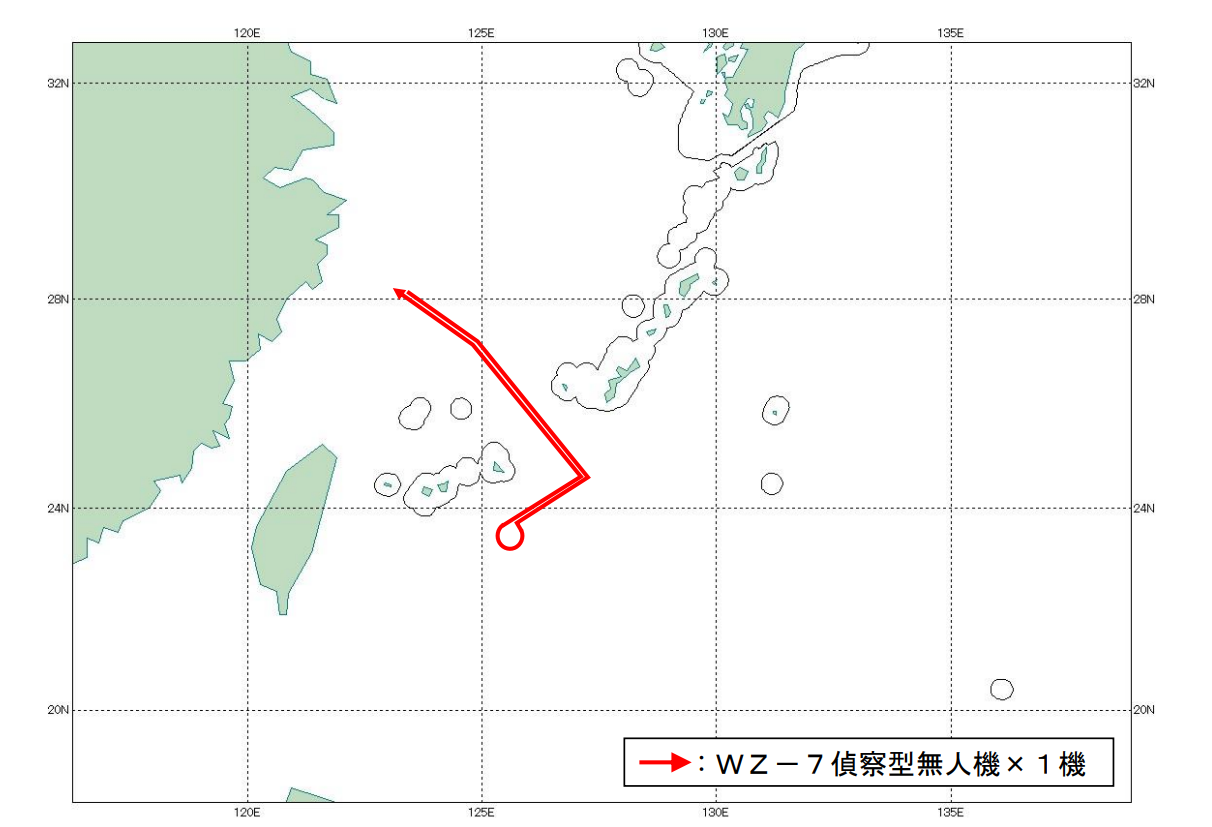In the first incident of its kind, the Japanese Defense Ministry revealed on January 1 that its Air Force intercepted China’s WZ-7 Soaring Dragon drone over the East China Sea. While the interception was considered a one-off incident, another WZ-7 flew again the next day over the same location.
The Chinese military drone WZ-7, considered one of the most advanced in its inventory, flew over waters between the islands of Okinawa and Miyakojima in southwestern Japan on January 1.
The Japanese Air Self-Defense Force scrambled its fighter jets (most likely the F-15J) to intercept the drone even though it did not enter Japanese airspace.
Interestingly this comes less than a month after the WZ-7 was spotted in the Tibetan region near the disputed LAC border with India. At the time, satellite photos released by Planet Labs showed the drone at Shigatse Base two days after Indian and People’s Liberation Army (PLA) troops clashed at Arunachal Pradesh’s Tawang.
However, the Japanese Self-Defense Force may have been caught off-guard as it was the first time the drone flew close to Japanese territory.
According to the Ministry, the Unmanned Aerial System (UAS) flew from the East China Sea, passing between the Japanese islands on its way to the Pacific Ocean. Then, it circled back over the same path as it headed west.
The flying path that the drone reportedly took is interesting. The WZ-7 passed through the Miyako Strait, a passageway that separates the main island of Okinawa and the Miyako Islands.
Recently, the PLA Navy has chosen this route for its aircraft carriers and other vessels to enter the West Pacific. This maneuver is often closely watched and followed by Tokyo.

Incidentally, a second WZ-7 drone was spotted by the Japanese MoD a day after the first interception. The drone operated in the same region and followed an identical flight path from the East China Sea to the Philippine Sea, passing relatively close to Okinawa and other distant Japanese islands.
In this instance, it wasn’t specified how close the drone flew to the Japanese territory. However, it most likely did not enter Tokyo’s airspace.
On January 1, PLAN’s Liaoning Aircraft Carrier, which has been conducting military drills for the past two weeks, also transited the Miyako Strait.
The flattop was escorted by the People’s Liberation Army Navy (PLAN) Type 055 destroyers Anshan and Wuxi, the Type 052D destroyer Chengdu, the Type 054A frigate Zaozhuang, and the Type 901 fast combat support ship Hulunhu as it crossed from the Philippine Sea into the East China Sea.
Thus, it is very likely that the drone activity was related to or connected with the carrier’s transit. For perspective, having a drone fly over the region before, during, or after the carrier’s transit could allow the PLAN to collect crucial intelligence by monitoring adversary forces’ radars and communication systems.
Okinawa Island is strategically placed and home to Japan’s high-end military assets. It is also home to the Kadena Air Base, which recently welcomed the US F-22 Raptor fighter jets as a replacement for ailing F-15 Eagles.
China’s Soaring Dragon Soar Over East China Sea
Notably, the recent Chinese activity comes days after Japan announced the deployment of a surface-to-air missile defense unit at the island of Yonaguni, which lies very close to Taiwan. Moreover, Japan has also announced its willingness to acquire long-range weapons to protect itself against its regional foes.
Japan updated its national defense strategy in December, announcing ambitions to obtain counter-strike capabilities against “enemy territory” (referring to China and North Korea) and increase military spending to 2% of its GDP by 2027. China was also described in the text as posing an “unprecedented strategic challenge” to the security of Japan.
Tensions have been running high in the region for a while now. The maximum interceptions of foreign aircraft carried out by the JASDF are attributed to China and Russia. However, the presence of a drone is significant and could become more regular in the foreseeable future.
With its distinctive WZ-7 Soaring Dragon joined-wing design, the intelligence, surveillance, and reconnaissance (ISR) drone may start appearing more frequently in Chinese operations in the region, offering capabilities somewhat similar to those of the RQ-4 Global Hawk that Japan received in March 2022.
The WZ-7 has a diamond-shaped wing and horizontal stabilizer configuration – the wings are swept back while the tails are swept forward. Produced by the Guizhou Aircraft Industry Corporation, the drone debuted at the Zhuhai Air Show in 2021 and was displayed at the Air Show in 2022.
The unmanned aircraft likely possesses artificial intelligence (AI)-enabled networking and sensor fusion, highly encrypted jamming-resistant data links to share battlefield information with fighting forces, and ISR links with Chinese satellites. It is believed to have an operational range of 7,000 kilometers and an endurance of 10 hours.
As tensions continue to grow in the region with Chinese intimidation and aggression against Taiwan and its overall expansion in the Indo-Pacific, the drone may become a regular visitor to the area.
- Contact the author at sakshi.tiwari9555 (at) gmail.com
- Follow EurAsian Times on Google News